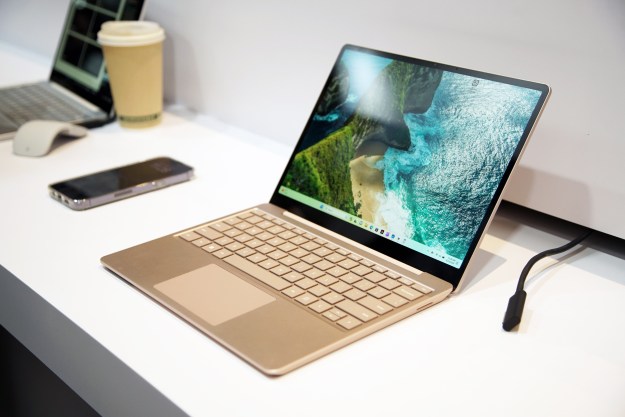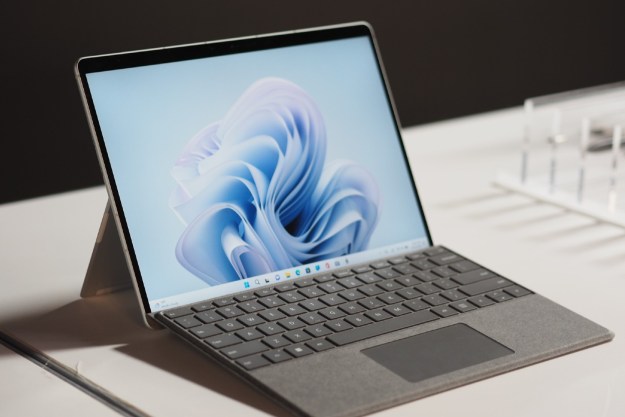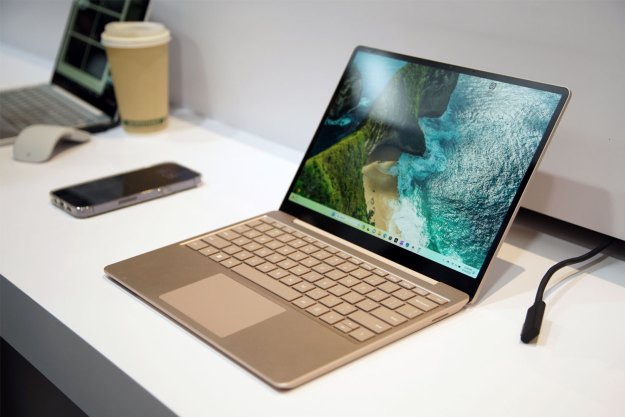It’s been just over six years since Microsoft introduced its very first personal computer, the original Surface tablet. While that device wasn’t terribly well-received, the company persevered, releasing the Surface Pro and staying the course until the Surface Pro 3 finally broke through to commercial success. Flash forward to today, and Microsoft has a full range of Surface PCs that appeal to all kinds of buyers.
If you’re in the market for a new Windows 10 machine, especially if you’re willing to spend premium dollars, then you’re probably giving at least some thought to a Surface device. If so, then this guide is for you. We break down each of Microsoft’s offerings and provide an idea of who it’s good for.
What’s the best?
Before we go into the details, let’s get the obvious question out of the way. What’s the best device?
It’s a bit silly to pick just one, of course, because these devices all aim at different users. However, the Surface Pro 6 excels above all others because it’s undeniably the best device in its class. If you want a 2-in-1, you should look at the Surface Pro 6 first. The Surface Book 2 is a close second. It fits in a tighter niche, however, and is quite a bit more expensive.
Microsoft’s other devices are competitive, but not our first pick in their respective categories. The Surface Go and Surface Laptop 2 are weakest; both have numerous competitors that might be a better choice.
Best 2-in-1: Surface Pro 6

The Surface Pro has seniority in Microsoft’s hardware lineup, having been first introduced in 2013 as a follow-up to the poorly received original Surface. The latest and greatest iteration is the Surface Pro 6, recently announced, that updated to 8th-generation Intel Core processors and thus offers quad-core computing in one of the thinnest Windows 10 tablets available.
We already loved the Surface Pro’s design, and the latest version does nothing to diminish it. It’s made of magnesium and enjoys the kind of fit and finish that comes with years of refinement. Microsoft didn’t change the aesthetics or the build this time around, and that’s for a good reason — it’s already just about perfect, with great balance and the best fold-down kickstand in the business.
Performance should be significantly improved with the CPU upgrade, and battery life is better. Whereas the previous generations struggled to last an entire working day, the Surface Pro 6 might finally go the distance. Our full review praised the Surface Pro 6 for delivering a nice boost in battery life.
You’ll enjoy the excellent Signature Type Cover option, pricey at $160, but offering Alcantara fabric for a splash of color and with an excellent keyboard mechanism that’s quiet and precise. The touchpad is on the small side, but it’s comfortable when swiping and kicking off Windows 10’s full range of multitouch gestures.
Like its peers, the Surface Pro 6 also serves up a lovely display, coming in at 12.3-inches with a 2,736 x 1,824 (267 PPI) resolution and a 3:2 aspect ratio. You’ll get the same high contrast and brightness to go with good but not great colors, and some of the best touch and pen support on a modern tablet.
The Surface Pro 6 starts at $899 for a Core i5, 8GB of RAM, and a 128GB SSD, but that doesn’t include the $160 Signature Type Cover or the $100 Surface Pen. You can spend as much as $2,299 for a Core i7, 16GB of RAM, and a 1TB SSD. Obviously, the Surface Pen 6 is a premium Windows 10 detachable tablet.
Who it’s good for? Anyone who wants a 2-in-1 device, either for tablet use, or as a laptop replacement.
What’s an alternative? Nothing.
Best Powerhouse Laptop That’s Also a 2-in-1: Surface Book 2

Next up is the Surface Book 2, a 2-in-1 notebook that introduced a novel convertible mechanism: a tear-off display that plugs into a stable keyboard base weighed down by extra batteries and, in some configurations, a discrete GPU. The original Surface Book was the first of its kind, and the Surface Book 2 updated the internals for more power and better battery life while adding a new 15-inch version to go with the smaller 13.5-inch Surface Book 2.
View the Surface Book 2 from across a room, and you’re sure to notice the “fulcrum hinge” first of all. It’s what enables the 2-in-1s ability to morph from a traditional clamshell notebook that’s eminently stable in one’s lap to a remarkably thin and light tablet complete with Surface Pen support in all its precise, tilt-enabled goodness. The hinge folds out and leverages the heavy keyboard base to keep the display/tablet portion, which contains the main PC components, well-balanced.
The Surface Book 2 also received an update to 8th-generation Intel processors in October 2017, as well as a high-end 15-inch configuration packing an Nvidia GeForce GTX 1060 into the base. The 13.5-inch version can be equipped with a GTX 1050 or without a discrete GPU at all for a lower price. All versions enjoy one of the best keyboards around, with deep travel and a satisfying bottoming action, to go with a large and precise Microsoft Precision touchpad.
We mentioned the additional battery life that included in the keyboard base, and when combined with the portion in the tablet section provides some of the longest battery life in each version’s respective class. The Surface Book 2 lasts a long time on a charge, and will easily get you through more than a full working day. The tablet doesn’t last so long, though, and is best used for shorter bursts.
We would be remiss if we failed to highlight the Surface Book 2’s display. Not only does it tear off, but it is, of course, touch-enabled and provides full support for the latest and greatest Surface Pen. It can also match up with the Surface Dial for more precise controls. Regardless of size, you get a 3:2 PixelSense panel with high resolution (3,000 x 2,000 or 267 PPI on the 13.5-inch, 3,240 x 2,160 or 260 PPI on the 15-inch), some of the highest contrast in a notebook, and solid colors and brightness.
As with most of the Surface line, the Surface Book 2 falls in extreme premium territory. The 13.5-inch model starts at $1,199 for a Core i5, 8GB of RAM, and a 128GB SSD, and that’s without a discrete GPU. You can spend as much as $2,999 for a Core i7, 16GB of RAM, a 1TB SSD, and the GTX 1050. The 15-inch version starts at $2,499 for a Core i7, 16GB of RAM, and a 256GB SSD and tops out at $3,299 with a 1TB SSD.
Who it’s good for? Mobile geeks, professionals, and artists who want a powerful notebook paired that can be used as a tablet in a pinch.
What’s an alternative? The Surface Book 2 is the best large 2-in-1. If you just want a powerhouse laptop, though, the Dell XPS 15 is a better choice.
Best for Artists: Surface Studio 2

At the very top of Microsoft’s Surface line is its innovative all-in-one (AIO) desktop, the Surface Studio 2. With its seemingly magical “Zero Gravity” hinge that allows the display to adjust from upright to the perfect drawing angle with just a touch, the Surface Studio 2 is a standout among modern AIO PCs.
As the name implies, the Surface Studio 2 is in its second generation, which built on the original Surface Studio design with improved performance thanks to a 7th-generation Intel Core i7-7820HQ CPU that’s a real step up from the previous version. Graphics performance was also significantly improved, with a choice between Nvidia GeForce GTX 1060 and 1070 GPUs that promise to drive its gorgeous display at a much faster clip.
Speaking of that display, it’s the real star of the show. It’s a 28-inch PixelSense touch- and pen-enabled display running at 4,500 x 3,200 (192 PPI) resolution in Microsoft’s favorite 3:2 aspect ratio. But specs only tell part of the story — the display is also individually calibrated for color accuracy, with profiles for the sRGB and DCI-P3 color spaces, and it’s been tweaked to provide even better colors, brightness, and contrast.
It’s a beautiful display for photographers and videographers for sure, but don’t leave out users whose artistic talents tend toward drawing. The Surface Studio 2 is an excellent platform for the a very precise active Surface Pen with 4,096 levels of pressure sensitivity and tilt control, along with the innovative Surface Dial input device that was literally designed for that expansive drawing surface. If you’re looking for a platform for digital artistry, then the Surface Studio 2 is designed for you.
You’ll pay for the privilege of using such an elegant AIO. With 16GB of RAM, a 1TB solid-state drive (SSD), another speed improvement, and a GTX 1060, the Surface Studio 2 starts at a whopping $3,495. Pick up the most potent configuration with 32GB of RAM, a 1TB SSD, and a GTX 1070, and you’re looking at $4,799. That’s a lot of cash — though less expensive than an iMac Pro.
Who it’s good for? Artists with big budgets who want a reasonably fast, hugely innovative, and expansive digital drawing platform
What’s an alternative? The iMac and iMac Pro are stiff competitors and arguably better if you don’t want a touchscreen. A standard desktop is also far more powerful at the same price, though artists will need to pair such a PC with a third-party device to use it for digital art.
Best Budget Device: Surface Go

The Surface Go is the newest member of Microsoft’s Surface stable and it’s also the least expensive. In fact, it’s something of an outlier, competing as much on price as it does that iconic Surface industrial design.
Don’t get us wrong: the Surface Go is a nicely built detachable tablet. It’s made up of the same magnesium alloy as the rest of the Surface line (except the Surface Laptop, see below), and it enjoys the same kind of build quality. It’s also much less expensive, making it a bargain when you consider just how robust it is.
It suffers in the performance department, though, utilizing an Intel Pentium Gold 4415Y processor that keeps things running but won’t win any races. That’s particularly true if you opt for the entry-level 4GB of RAM, which won’t do Windows 10 any favors. You can choose up to 8GB of RAM to speed things up. Storage also matters, with a choice between 64GB of slow eMMC storage and a faster 128GB SSD.
Like the build quality, the display punches above its weight. It’s a 10-inch 3:2 PixelSense display at 1,800 x 1,200 (217 PPI) that offers high contrast, excellent brightness, and good colors and accuracy. The Surface Go might cut costs, but it doesn’t cut corners on display quality.
You’ll want to add a Signature Type Cover at $130, which has the same excellent feel as the Surface Pro’s version but is necessarily slightly more compact. The touchpad is good as well, and the display supports touch and the Surface Pen. Input on this low-cost tablet is competitive with anything on the market.
Most important, though, is the price. The Surface Go represents your one chance to get into a Surface device without breaking the bank, starting at just $399 for 4GB of RAM and 64GB of storage, and jumping to $549 for 8GB of RAM and 128GB of storage. To be fully functional, you’ll want to add the $130 Signature Type Cover and $100 Surface Pen.
Who it’s good for? Anyone who doesn’t want to spend a lot of money but still wants a high-quality Windows 10 tablet.
What’s an alternative? An iPad or iPad Pro would work better if you want a tablet. The Lenovo Miix line can be a good alternative if you need to stick with Windows. You might even find an older model Surface Pro for a competitive price.
Best Boring (Yet Useful!) Laptop: Surface Laptop 2
Microsoft doesn’t just make 2-in-1s and AIOs that can serve as science fiction props. It also makes a traditional clamshell notebook, the Surface Laptop, that doesn’t fold, disconnect, or float. Instead, it makes do with a thin, light, and robust all-aluminum chassis, an excellent keyboard and touchpad, and a high-quality display — that, yes, does support touch and the Surface Pen (a dubious distinction in a clamshell) in a nod to Microsoft’s creative professional audience.
The Surface Laptop 2 was recently introduced, and its most important update was to Intel’s 8th-generation Core processors. The injection of speed and efficiency is important to keeping the Surface Laptop 2 in the running against a very competitive crop of 13-inch class notebooks.
But what makes the Surface Laptop 2 stand out most are its color schemes, which mate painted aluminum with the same Alcantara fabric that adorns the Surface Pro’s Type Cover. This fabric is matched with the chassis to create a unified aesthetic that adds a real splash of color to what’s otherwise a typical clamshell design. The combination of materials is all robust, fitting well into the Surface lineup in this regard, and the Alcantara does more than just improve aesthetics — it also makes for a comfortable place to rest your palms while typing.
The keyboard is also comfortable, offering copious travel and a precise and snappy mechanism. The bottoming action offers plenty of feedback without being harsh, making the Surface Laptop 2’s keyboard overall one of the best around. The touchpad is large and also precise, with good support for the full range of Windows 10 multitouch gestures.
Of course, the Surface Laptop 2 is a Surface device in spite of it’s more traditional form factor, and that means its display is also simply high-quality. It’s a 13.5-inch PixelSense display in the usual 3:2 aspect ratio at 2,256 x 1,504 (201 PPI) resolution. As usual, contrast is excellent, and its colors are good but not great. It’s a display that’s made for productivity workers, and if that’s you, then you’ll love it.
The Surface Laptop 2 is a bona fide premium notebook, starting at $999 for a Core i5 CPU, 8GB of RAM, and a 128GB SSD. Fully configured with a Core i7, 16GB of RAM, and a 1TB SSD, the machine costs a hefty $2,699.
Who it’s good for? Anyone who wants a well-made notebook with a bit of panache, and isn’t afraid to pay for it
What’s an alternative? The Dell XPS 13 is always a fantastic pick.
Editors' Recommendations
- The thinnest laptops you can buy
- The best tablets in 2023: top 11 tablets you can buy now
- The best MacBook to buy in 2023
- Best Surface Laptop and Surface Pro deals: Prices from just $500
- Surface Laptop Go 3 vs. Surface Pro 7+: is it an upgrade?



